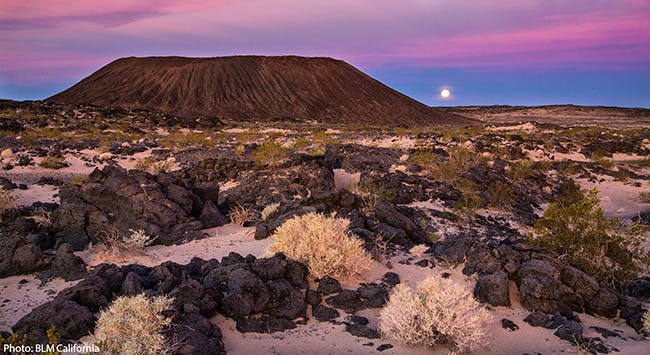New national monuments protect more than 1 million acres of California desert wildlife habitat
I may be biased, but I think that the California desert has some of the most beautiful landscapes. The Mojave Desert boasts incredibly diverse natural resources — stunning springs of underground water; the last intact valley in the West Mojave plant ecosystem, Sleeping Beauty Valley; and The Cady Mountains, one of the best places to see bighorn sheep.
The Castle Mountains are home to a diverse array of desert wildlife — most notably, golden eagles, desert bighorn sheep and the federally listed desert tortoise. The mountains also include some of the most vibrant forests in Southern California, including Joshua tree, pinon pine and juniper forests.
(story continues below)

One of the most breathtaking sights in the desert is Sand to Snow Mountain, the tallest alpine mountain in California. It is aptly named as it literally rises from the desert to snowy peaks.
And it appears Californians like me are not the only ones who appreciate the importance and beauty of these landscapes in our backyard.
Today, President Obama issued a proclamation designating three new national monuments totaling 1.8 million acres in the California desert: Mojave Trails, Sand to Snow and Castle Mountains.
National monument status already provides permanent protection to many beautiful landscapes across our nation. President Theodore Roosevelt designated our first national monument, Devils Tower — a volcanic neck in Wyoming that rises 1,267 feet above its surroundings – in 1906. His foresight to protect our public lands was controversial at the time, but was ultimately visionary. Thanks to him, 110 years later, we now have 120 national monuments, including our three new monuments in the California desert.
The Mojave Trails National Monument will protect wildlife corridors that connect two national parks – The Mojave National Preserve and Joshua Tree National Park – and 13 wilderness areas, including bighorn sheep and desert tortoise habitat. Protection of such a vital landscape will safeguard its natural wonders, its history and its scenic vistas while also giving people a place to visit for hiking, biking, and all kinds of outdoor fun.
The Sand to Snow National Monument is one of the most botanically diverse mountain ranges in California. The wetlands in the Sand to Snow National Monument provide vital habitats for more than 240 types of migratory birds, such as yellow chat and vermillion flycatchers.
Because of its close proximity to the Mojave National Preserve, the Castle Mountains National Monument offers multiple opportunities for biologists and tourists alike. The newly protected area provides excellent opportunities to study the wildlife movements of the iconic desert bighorn sheep and the threatened desert tortoise. It will also help support the region’s tourism and recreational economies.
Now, when I look out at our beautiful California desert, it is all the more stunning knowing that these places will be protected for our nation’s wildlife as it continues to adapt to a changing climate, and for my children and future generations to enjoy. I know I am not alone in giving my thanks to President Obama, Secretary of the Interior Sally Jewell, Senator of Agriculture Tom Vilsack and Senator Dianne Feinstein (D-CA) for all of their efforts in granting these iconic California landscapes and important wildlife areas permanent protection by making them into national monuments. What a way to start the year for wildlife and wild places in California!



